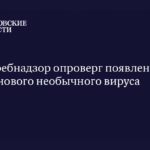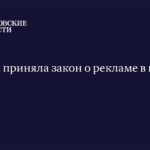Exhibition of Moscow’s Achievements Launches at Gostiny Dvor
Moscow has launched the annual festival «Territory of the Future. Moscow 2030,» dedicated to the development of the capital, plans for city modernization, and the life of modern people. On the first weekend after the festival’s opening, a correspondent visited one of the flagship venues at Gostiny Dvor and learned how the future is envisioned by the Moscow city government and whether this vision aligns with the perceptions of the city’s residents.
The exhibition organizers wanted to showcase the scale of the changes happening in the city
The theme of the exhibition at Gostiny Dvor is called «Endless Development with Eternal Values.» And the first eternal value that visitors encountered on their way was a half-hour queue at the entrance. On Saturday evening, it started from the corner of the building on Ilyinka and stretched to the central entrance.
As soon as visitors got inside, it turned out that they had entered from the end: the main entrance to the exhibition, where the exposition chronologically begins, is on the opposite side of Varvarka Street, through beautiful arches with slogans «Moscow – City of the Future.» This way of entering Gostiny Dvor is so unusual for Muscovites that on Saturday there were no queues from that side. But even from the end, another Moscow value was immediately noticeable. «Oh, the scale!» one woman described the huge human figures several stories tall installed in the center of the exhibition. Equally giant hands seemed to push apart the exhibition’s curtains: passing by them, it became unsettling that one’s head was barely the size of a fingernail on these hands.
Those who entered from the «correct» side (from Varvarka) were greeted by staff with guidebooks describing each zone of the exposition. They weren’t sure that anyone would actually read these booklets, so they invited everyone on tours.
The tour guide briefed the gathered crowd, paraphrasing the words of the vice-mayor of Moscow that the organizers «wanted to create a space where every person can at least briefly rest from the daily hustle and bustle.»
All this took place against the backdrop of a huge installation called «Windows of the City’s Opportunities.» The composition consists of a wall with glowing windows, each symbolizing one of the opportunities available to Muscovites. Past the windows, mannequins – gray human figures – climb up ropes along the wall, apparently representing people reaching for these opportunities. Moreover, the windows labeled «Moscow longevity,» «new competencies,» and «start of a successful career» are closer to reach than those located near the ceiling: «new standards in healthcare,» «education,» and «digital services.»
In the technology zone, among flashing information about the number of hospitals and schools renovated in recent years, there are models of buildings whose renovations are not yet completed. For example, one can see what the updated Sklifosovsky Research Institute and new colleges that are still under construction will look like. By the way, they were recruiting students right there: exhibition staff, some of whom are still studying in vocational programs themselves, talked about opportunities to get a profession (if not of the future, then very much needed in the present). They spoke about high employment rates and cooperation with industry partners. But the young audience was clearly interested in something else. A boy about to start first grade seemed to have already asked a hundred questions to one of the college students about how to operate a subway car and «assemble cars.» The student was unfailingly polite and maintained the dialogue, although he later admitted to the correspondent that he was actually studying «tourism.»
The most people gathered in the «health» zone.
At one of its stands, visitors were told about proper nutrition. A drawn cross-section of a man with clearly excess weight had soda cans where his heart should be. A slender athlete’s heart was somehow not visible at all, covered by ribs in the shape of a steak. Nearby hung «Moscow’s health rules,» which, according to the exhibition organizers’ logic, Muscovites should follow. These include, for example, the habits of «thinking positively,» «maintaining social connections,» «getting enough sleep,» and «avoiding stress.» One visitor photographed these rules as a memento and laughed: «Good thing they don’t fine you for breaking these rules. Otherwise, they’ve been replacing asphalt all summer in the mornings – haven’t been able to get enough sleep for




